Speed Record in Transat Jacques Vabre
Published on November 10th, 2017
(November 10, 2017; Day 6) – The ferocious pressure in the air, on the water and in the boats in this 13th edition of the Transat Jacques Vabre saw the Class40, V and B, break the 24-hour speed record today (Friday).
French skippers Maxime Sorel and Antoine Carpentier, in second place on V and B traveled 377.7 nautical miles between Thursday, November 9, 07:30 (UTC) and Friday, November 10 (07:30) at an average speed of 15.7 knots.
As if the Anglo-Spanish and French rivalry at the front of the Class40 fleet needed any more stoking. British skipper Phil Sharp and his Catalan co-skipper Pablo Santurde, the leaders on Imerys Clean Energy will be doubly conscious of V and B’s speed as the previous record was held by Thalès II, skippered by Gonzalo Botin and Santurde. They travelled 373.3 miles at 15.56 knots average on July 16, 2016 during the Transat Quebec-Saint-Malo.
60-50-30
Five days after leaving Le Havre in Normandy, the Class40 have completed almost a third of the race, the Imoca and Multi 50 almost half, and the Ultime 60 per cent.
A duel in the sun
The hunter is now the hunted but Sodebo Ultim’ is more than holding its own against the newly-launched Maxi Edmond de Rothschild as they rapidly approach the potentially decisive phase: the Doldrums, which are loitering at 7 degrees North of the Equator. But it looks likely that they will be battling all the way to the line with arrivals predicted on Monday, November 13. “In these conditions, you quickly go from being the hunter to the hunted,” Thomas Coville, the skipper of Sodebo Ultim’ said in the morning when the lead they had stunningly taken on Thursday had been cut to under 20 miles. But Maxi Edmond de Rothschild lost 10 miles during the day directly the wake of the Sodebo Ultim’.
It is hard to know why. They are both averaging around 26 knots in near-perfect downwind drag race conditions. Perhaps the most obvious reason is that these 15-knot north-westerlies are not strong enough to unleash Maxi Edmond de Rothschild’s potential. Thomas Rouxel, the co-skipper said before the start that in the two months of testing they felt that if they were travelling “under 30 knots, we feel very slow and like we’re stuck in glue.” It could be their slower transitions and lack of familiarity with their new great beast as Rouxel suggested today.
But these teams play things close to their chests and it may be that they are being more conservative because of accumulated fatigue or they are testing things – as skipper Sébastien Josse said on the start line? Or could there is a small technical glitch – they would not be the only ones.
Multi50: The west pays out for Le Roux and Riou
Ten miles behind in second early this morning, 12 hours later Fenêtre A- Mix Buffet (Erwan Le Roux / Vincent Riou), who had positioned themselves 50 miles west are 33 miles ahead of Arkema.
Imoca: The dominant favorite
Commanding leaders of the Imoca, St Michel-Virbac, continues to slowly stretch away from the fleet. The leader sailed a knot faster over 24 hours than the other foilers. SMA, in second, continues to be the most impressive pursuer, particularly as it is an older boat without foils. They hope that the softening conditions in the next 24 hours will favour them. Des Voiles et Vous! In third is beginning to pay for staying east as that high-pressure system in their path is forcing them west and has cost them 80 miles.
Class 40: The heat is on
Nowhere is the fleet racing keener than in Class40s. Imerys Clean Energy continues to hold the lead and are not far off a record 24-hour speed themselves, despite battling with antenna failure and a lack of weather files. Three French boats are in hot pursuit off Madeira: V and B ((second in the race in the last edition in 2015), Aïna Enfance et Avenir et TeamWork40. The GPS recorded an almost unbelievable 28 knots on GPS today.
Damage report
On Ciela Village, Thierry Bouchard and Oliver Krauss have been sailing without an autopilot since the second day of the race. Also without a computer, they are take turns at the helm, one and a half hours each.
Pit stops
Early leader and one of the Class40 French favourites, the newly-launched Carac, has slowly been dropping off the pace in the last few days and it is becoming clearer why as it heads for Funchal in Madeira. Louis Duc, third in the race two years ago, needs medical attention following a violent blow to his knee. On anti-inflammatories for three days, Duc ‘s condition has worsened by further blows and he is unable to move around the boat. They should arrive during the night.
Enel Green Power: Italian duo, Andrea Fontini and Alberto Bona, should arrive in Lisbon at 04:00, where they will try and fix their broken starboard rudder. The damage occurred yesterday morning when the boat hit a UFO.
Rescued
After their capsize (full report) and dramatic rescue yesterday morning, Eric Defert and Christopher Pratt, skippers of Drekan Groupe, transferred from Beautriton, the Dutch freighter that came to their aid, on to a Portuguese Navy patrol boat and landed at Punta Delgada (Azores) this afternoon.
Race details – Entry list – Tracker – Facebook
13th edition of the Transat Jacques Vabre
• Biennial doublehanded race now 24 years old
• Two founding partners: the city of Le Havre and brand Jacques Vabre
• Four classes on the starting line: Class40, IMOCA, Multi50, and Ultimate
• Starting November 5 in Le Havre (FRA) for the 4350nm course to Salvador de Bahia (BRA)
n 2013, and again in 2015, all the boats flew past Salvador de Bahia, sails filled by the trade winds of the south-east, under the tropical sun…One imagines that they dreamt of finally finishing their race in All Saints’ Bay. In 2017, it will be a reality!
After the start line and a coastal route as far as Etretat, the duos will head towards Brittany to get out of the Channel as quickly as possible, where the currents are powerful, cargo traffic dangerous, and a lot of attention is needed.
They will then enter the Bay of Biscay, where, depending on the position of the Azores anticyclone, they will either find downwind conditions, easy and fast, like for the last Vendée Globe, or tougher and slower conditions in the passage of some late autumn depressions.
Four hundred miles later, having passed Cape Finisterre, the northern Portuguese trade winds should propel them quickly towards Madeira, and then the Canary Islands, where awaiting them will be northeast trade winds, which could be strong or weak.
Passing close to the Portuguese coast, or offshore, to the east or west of the Canary Islands and then the Cape Verde islands – you have to choose the right options. The next goal is to establish your position for the crossing of the dreaded Doldrums, located a few degrees north of the equator. At this time of year, it can change position very quickly, extend or contract, because even after carefully studying of the satellite images, sudden squalls can develop and stall the competitors under a good shower without wind for hours.
This passage is crucial in the Transat Jacques Vabre racecourse. Further west… Further east… After the calms, rainy squalls, with too much or no wind… The final goal is to get out well-positioned enough to benefit first from the southeast trade winds and to cover the remaining 850 miles towards the finish,passing along the islands of Fernando de Noronha, along the coast of Brazil and finally heading northwest into the magnificent All Saints’ Bay.
This transoceanic racecourse from North to South is more demanding than a transat from East to West; it requires the skippers to have sharp tactical and strategic qualities, good weather training, to be in excellent physical condition to maintain a sustained speed in the trade winds… And to have a lot of patience to cross the equator.
Source: Transat Jacques Vabre


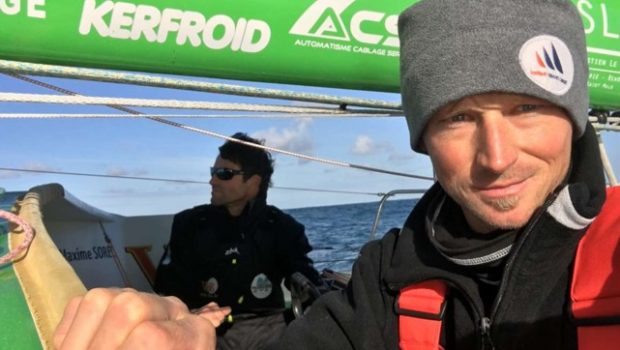
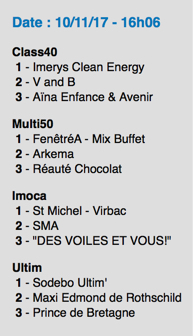

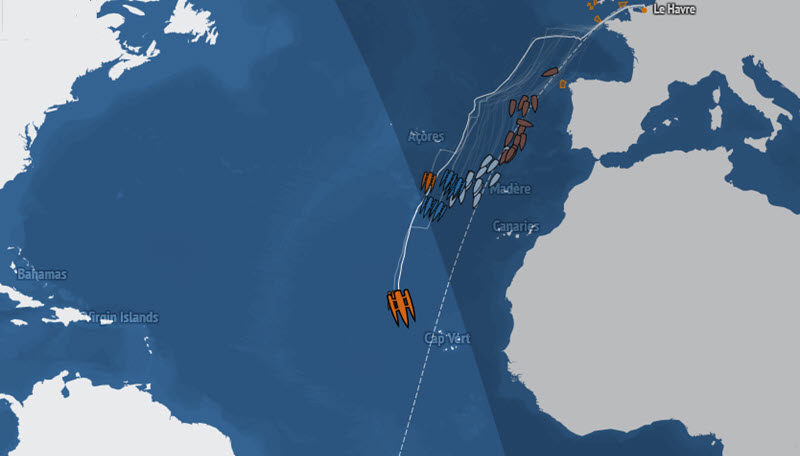
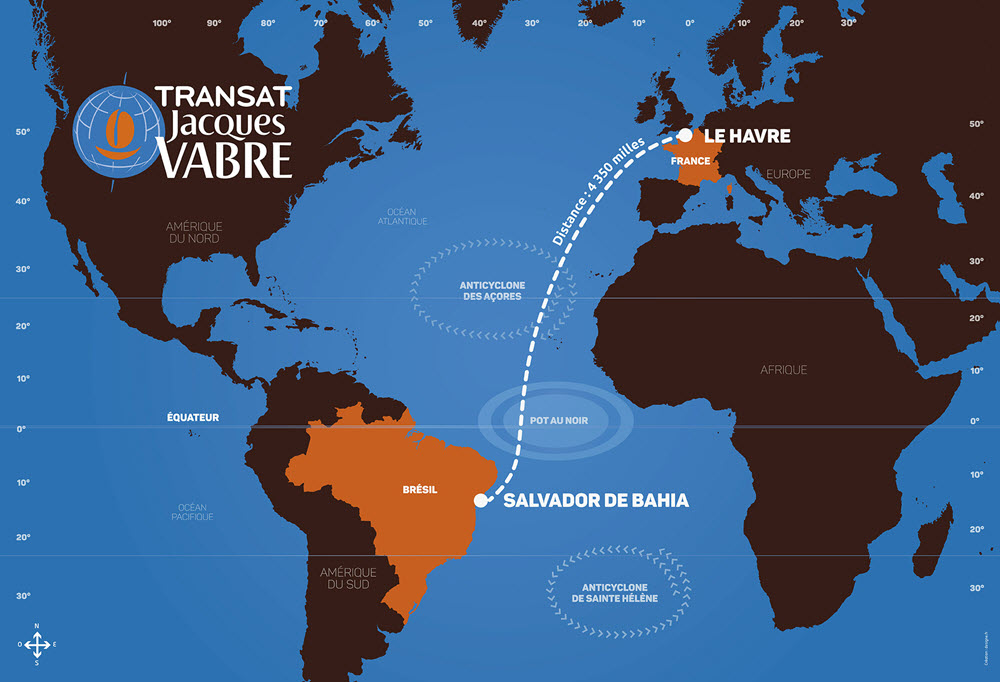

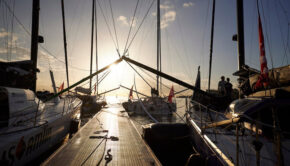
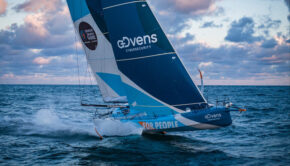
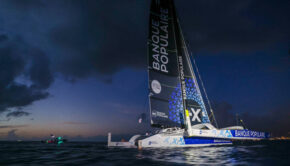
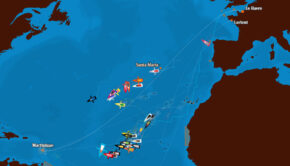
 We’ll keep your information safe.
We’ll keep your information safe.